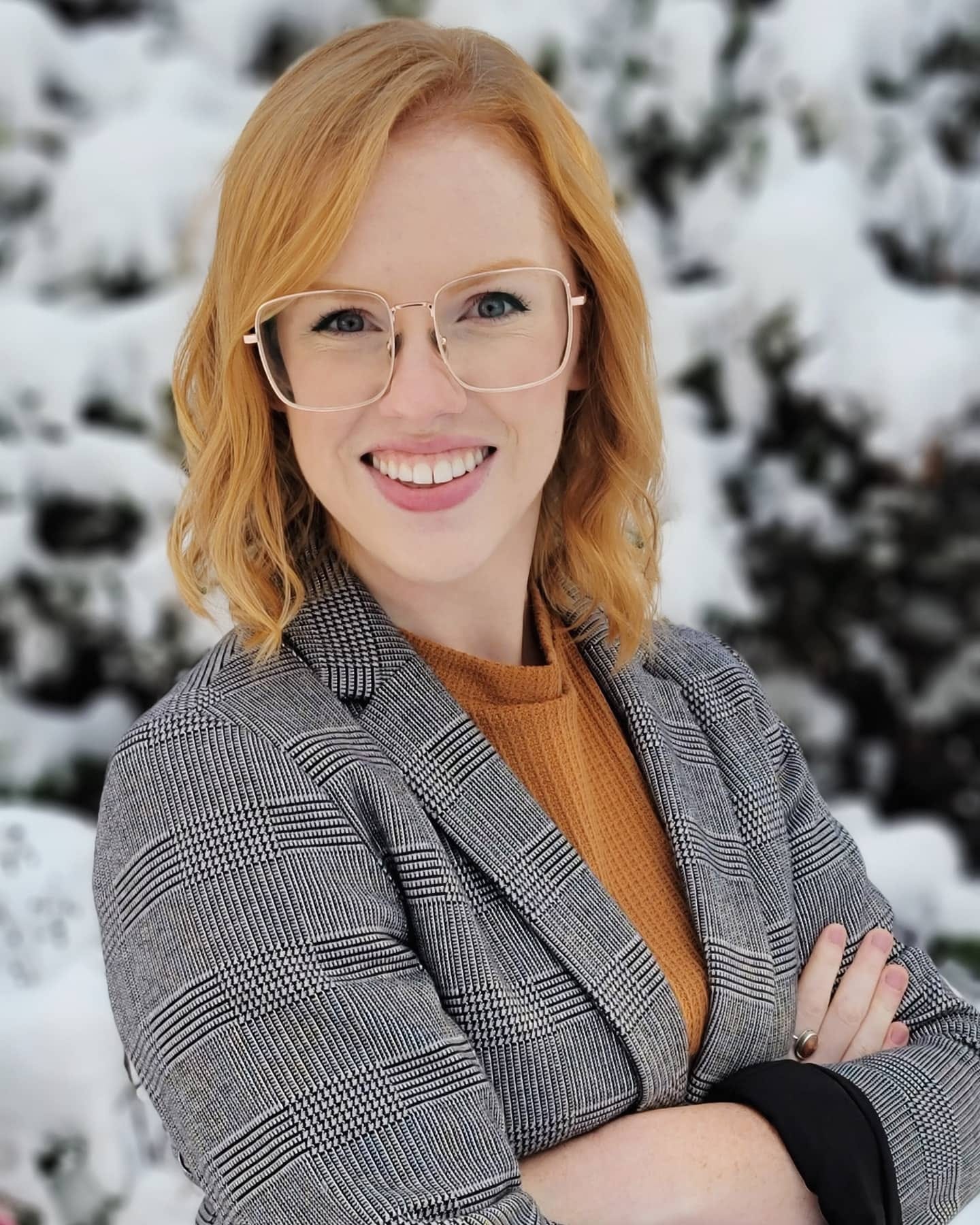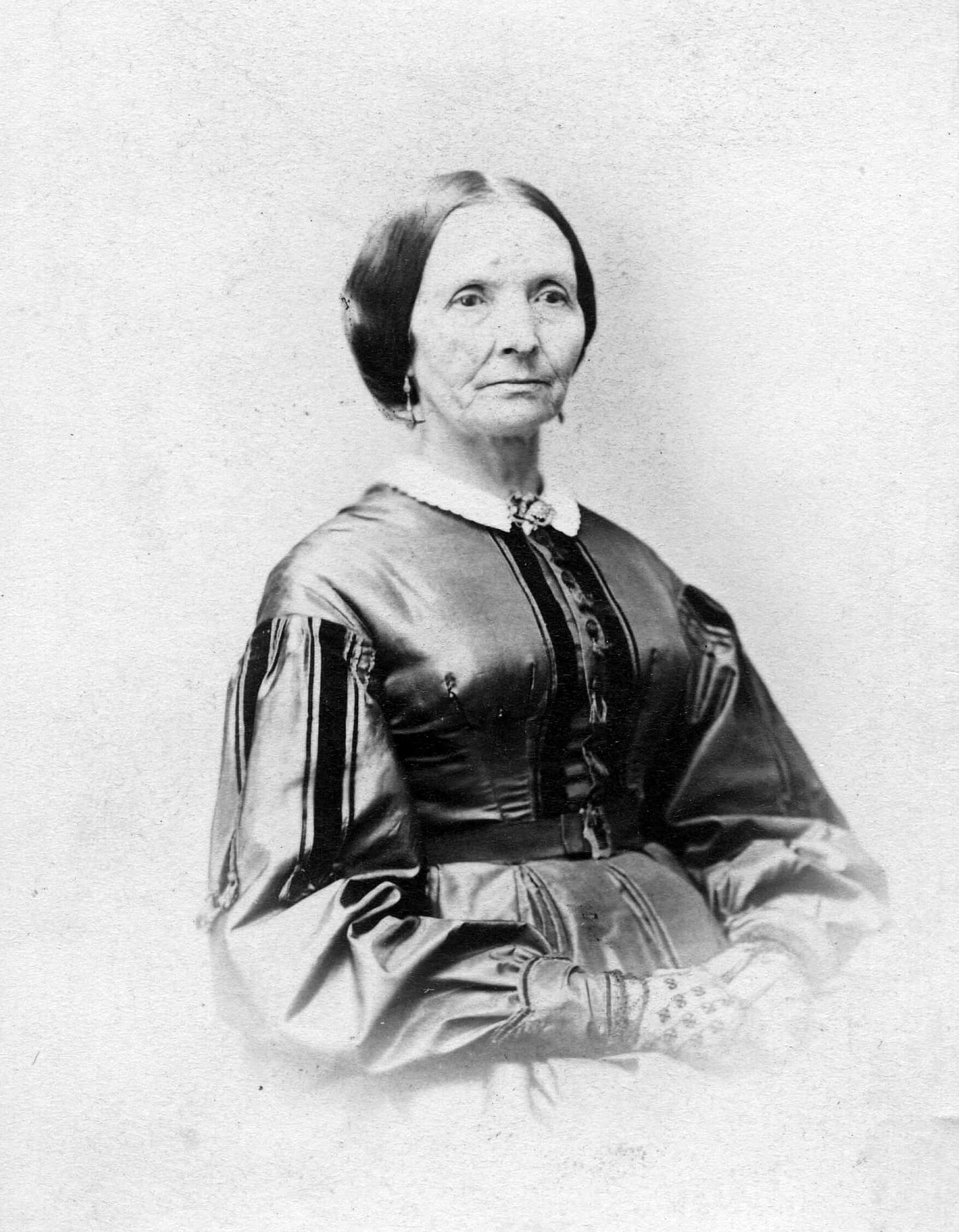The Enigma of Mormon Women's Religious Authority
The Winning Graduate Student Blog Post from my Spring 2023 Seminar on Women and Religious Authority
Years ago, I met a woman who told me that Eliza R. Snow, perhaps the most prominent and influential Mormon women of the nineteenth century, was the reason she decided to come back to the Church of Jesus Christ of Latter-day Saints. This woman, a feminist, found in Eliza a reason to reengage with the religious community she had been raised in but drifted away from. Eliza, and the theology of Heavenly Mother that is often traced to her, helped this woman believe there was a place for her and that her voice mattered within her church.
I didn’t know if I should tell her that Eliza was not actually the feminist that she seemed to imagine her as.
One of the first historical articles published on Snow was aptly titled, “The Eliza Enigma.” Historian Maureen Ursenbach Beecher began by explaining, ‘poetess,’ ‘prophetess,’ ‘priestess,’ ‘presidentess,’ were all labels given to Snow by her contemporaries. Mormon women in the nineteenth century, “turned out in numbers whenever and wherever she spoke on her many visits throughout the Great Basin kingdom; they listened to her, quoted her, obeyed her, and found in her ‘the president of the female portion of the human race,’ She was a legend before half her effective life was done, and lived that legend for the rest of it.” [i]
Historians continue to be fascinated with Snow, publishing and theorizing about her lasting impact on Mormonism. Yet, Eliza remains an enigma. She encouraged women to act, to vote, to protest, to publish, to give blessings, to speak in tongues, to receive revelation, to take matters into their own hands, to save themselves, and to do whatever was needed to build Zion. But she also constantly told them to obey and submit to their husbands and male ecclesiastical leaders, continuously and unapologetically reaffirming Mormon patriarchy.
Thus, Eliza left a confusing legacy that haunts Mormon women today. On the one hand, Mormon feminists are inspired by her influence and authority. On the other hand, Mormon women who attempt to emulate her example of authority and influence run the risk of being complicit a system that upholds women’s oppression. They risk perpetuating patriarchy.
Snow and the Patriarchal Bargain
“Bargaining with patriarchy” is a term coined by Deniz Kandiyoti to describe the strategies women employ to gain power within the constraints of a specific patriarchal system.[ii] While it isn’t a perfect way to describe Snow and Mormon women’s actions, it is useful.
Snow and other Mormon women literally gained power because of their support of Mormon patriarchy. They believed, perhaps paradoxically, that submission to polygamy would redeem them from the Curse of Eve. Thus, they supported both polygamy and patriarchy.
Like many other nineteenth-century Christians, Snow believed in the Curse of Eve. However, she also adamantly rejected the idea, which was taught by some Mormon leaders, that women were inferior to men, either now, in the preexistence, and/or in the next life.[iii] Rather, she saw the necessity of women submitting to men as a temporary result of the Fall, and not indicative of women’s eternal status or worth.
She believed the Curse of Eve would be lifted, possibly in her lifetime. In 1869, she taught, “we will come from under the curse that was placed upon woman through the transgression of mother Eve by being obedient to our husbands and walking up to the laws of God[.] those who get into the Celestial Kingdom will… become equal to their husbands and walk side by side with them.”[iv]
Submission would lead to equality, Snow believed. Mormon women needed to submit to God and their righteous husbands, even (or maybe especially) if that submission required sharing their husband with other women. Plural marriage had many names in nineteenth-century Mormonism, but women who practiced it often called it an Abrahamic Sacrifice. Of course, they affirmed, such a sacrifice brought you closer to God. And perhaps, women like Snow posited, such a complete submission would be enough to overcome the Curse of Eve.
In 1870, Mormon women were given a chance to prove their devotion to plural marriage. On January 13, Snow organized a mass indignation meeting in Salt Lake City to protest the Collum bill, an anti-polygamy bill being considered in Congress. She and others condemned the United States government for trying to take away their religious freedom.[v]
Several weeks later, the Utah Territory legislature granted women’s suffrage. Historian Laurel Thatcher Ulrich explains, “Congress’s attempt to outlaw polygamy outraged [Mormon women], but it also strengthened their position within their own community as they rose to its defense. Their support for their brethren was sincere, but it was also strategic. They knew when and how to ask for the things they wanted, and they wanted the right to vote.”[vi]
Days after receiving suffrage, Mormon women in Salt Lake City gathered and discussed their new right. Snow encouraged them to take this responsibility seriously. Another woman, Precindia Kimball, declared, “The day is approaching when woman shall be redeemed from the curse placed upon Eve, and I have often thought that our daughters who are in poligamy will be the first redeemed.”[vii] Suffrage was seen as evidence that the Curse of Eve was being lifted from Mormon women. To them, the patriarchal bargain seemed to have worked.
Snow and Heavenly Mother
But bargaining with patriarchy was not the only way that Mormon women exercised religious authority. Often, Mormon women claimed power and authority without any appeal or deference to Mormon patriarchy.
One of those ways is through poetry. Mormon women have used poetry to express theological claims, the most famous example being Snow’s 1845 poem which is now a canonical source for the theology of Heavenly Mother. She wrote,
“In the heav’ns are parents single?
No, the thought makes reason stare:
Truth is reason—truth eternal
Tells me I’ve a mother there.”[viii]
While Snow and others later affirmed that Joseph Smith had taught about Heavenly Mother, the authority she claims in the poem is simply her own innate reason and ability to perceive truth. There is no bargain here: only a woman asserting theological knowledge in prose.[ix]
Conclusion
Like Snow, Mormon women continue to be enigmatic. The power women gain by bargaining with patriarchy is practically always contingent, upon both their continued support of patriarchy and the changing cultural moment. In the twentieth century, after the church ended polygamy, they no longer needed women’s voices to defend the practice. Institutionally, twentieth-century Mormon women were disempowered in many ways.[x]
However, focusing only on institutional power can obscure the religious authority Mormon women exercise. Mormon women continue to influence theology and culture. They continue sacred practices and liturgy. Recently, I had an opportunity to talk with a woman who has dedicated her life to researching Mormon women’s history. She is also a practicing Latter-day Saint. As we talked, she said to me, “Mormon women don’t need to ask permission. They shouldn’t wait to be told what to do. They can just do it.” She and other women were going to give a blessing of healing to their friend who was ill, a common practice among nineteenth-century Mormon women which was highly discouraged by male church leaders in the twentieth century. Women who continue the practice today risk church discipline.[xi]
“We don’t need permission to do that,” she said with a smile.
[i] Maureen Ursenbach Beecher, “The Eliza Enigma,” Dialogue: A Journal of Mormon Thought 11, no. 1 (1978): 31. The Church History Library is currently completing a project to collect and digitize all Snow’s sermons and discourses, which can be found at https://www.churchhistorianspress.org/eliza-r-snow.
[ii] Deniz Kandiyoti, “Bargaining with Patriarchy,” (1988), found in Feminist Theory Reader: Local and Global Perspectives, eds., Carole R. McCann & Seung-Kyung Kim (New York: Routledge, 2017), 103-111.
[iii] See her poem, Snow, “For the 24 Young Ladies,” 21 July 1851, in Eliza R. Snow: The Complete Poetry, eds., Jill Mulvay Derr & Karen Lynn Davidson (Salt Lake City, Utah: University of Utah Press, 2009), 409-411. For examples of Mormon leaders who taught women’s inherent inferiority, see Orson Hyde, “Sermon,” Deseret News, 18 March 1857, in Jill C. Mulvay, “Eliza R. Snow and The Woman Question,” BYU Studies Quarterly 16, no. 2 (1976): 259; F. D. Richards, “Family Relations,” Millennial Star 17, no. 46 (November 17, 1855): 722.
[iv] Big Cottonwood Ward, Granite Stake, Relief Society Minutes and Records (1868–1948), vol. 1 (1868–1882), pp. 58–61, CHL (LR 712 14); Mary E. Boyes, Secretary.
[v] https://www.churchhistorianspress.org/the-first-fifty-years-of-relief-society/part-3/3-13?lang=eng.
[vi] Laurel Thatcher Ulrich, A House Full of Females: Plural Marriage and Women’s Rights in Early Mormonism, 1835-1870 (New York: Alfred A. Knopf, 2017), xiv.
[vii] Fifteenth Ward, Riverside Stake, Relief Society Minutes and Records (1868–1968), vol. 1 (1868–1873), pp. 151–156, CHL (LR 2848 14).
[viii] Snow, Eliza R. Snow: The Complete Poetry, ed. Jill Mulvay Derr and Karen Lynn Davidson (Provo, Utah: Brigham Young University Press, 2009), 313-314.
[ix] For more on the theology of Heavenly Mother, see David L. Paulsen and Martin Pulido, “‘A Mother There’: A Survey of Historical Teachings about Mother in Heaven,” BYU Studies 50, no. 1 (2011): 70-97.
[x] For a history of Mormon women in the twentieth century, see Colleen McDannell, Sister Saints: Mormon Women Since the End of Polygamy (New York, NY: Oxford University Press, 2019).
[xi] For more on the practice of blessings of healing given by women, see Linda King Newell, “A Gift Given: A Gift Taken; Washing, Anointing, and Blessing the Sick Among Mormon Women,” Sunstone 6, no. 5 (1981): 16-25.






What fascinates me about Eliza is that recently someone pointed out that Eliza never took on the names of her husbands--neither Joseph Smith's name nor Brigham Young's. Unlike, say, Zina Diantha Huntington Jacobs Smith Young who was also married to those two men, why Eliza never took on their names endears her complicated self to me even more.